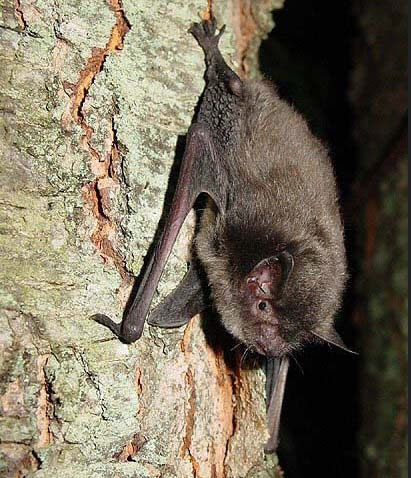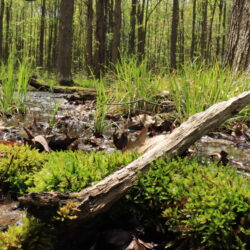
Michigan’s Most Misunderstood Mammals
Posted on October 30, 2025
October is the time of year when bats make their annual appearance on front porches, in haunted house décor, and swooping through Halloween night skies. They’re often portrayed as creepy, dirty, or even dangerous: creatures of darkness linked to vampires and fear. But this Halloween season, it’s time to flip the script. Bats aren’t spooky villains. They’re vital allies in our ecosystems, quietly performing extraordinary work every single night.
During the week leading up to Halloween, the world celebrates Bat Week (October 24 - 31): an annual celebration of bats and the many roles they play in our ecosystems. Bat Week strives to show the critical importance of bats and raise greater awareness of conservation efforts worldwide. Far from frightening, bats are essential to healthy habitats. A single bat can eat thousands of insects in one night, including mosquitoes, crop pests, and disease-spreading bugs. In doing so, they naturally protect crops, reduce pesticide use, and help keep ecosystems in balance.
Yet despite their importance, bats face serious challenges — especially here in Michigan.
Michigan’s Bats: Small but Mighty
Michigan is home to nine species of bats, all insectivores that play critical roles in controlling pests and maintaining healthy forests and fields. Unfortunately, many are declining due to habitat loss and white-nose syndrome, a fungal disease that has devastated bat populations across North America.
This disease disrupts hibernation, causing bats to wake too early and burn through fat reserves they need to survive winter. Bats suffering from white-nose syndrome may appear disoriented, fly during the day, or cluster near cave entrances in cold weather.
If you spot a bat acting strangely, you can report it through the DNR’s Eyes in the Field app — an important tool for tracking outbreaks and protecting remaining populations.
How You Can Celebrate Bat Week and Help Michigan’s Bats
Simple choices in your yard and community can help bats thrive:
-
Leave the leaves to give insects (and the bats that eat them) a safe place to overwinter. If you don't want to leave the leaves covering your entire yard, consider leaving them in your flower beds and landscaping around your house.
-
Plant native species to attract healthy insect populations and reduce pesticide use.
🦇 Watch The Invisible Mammal — a new documentary celebrating bats: theinvisiblemammal.com
🏡 Build or buy a bat house to create safe roosting space: batweek.org/make-bat-house
📍 Report local bat roosts through the Michigan DNR Bat Roost Monitoring Program
Can you tell the difference between bat fact and fiction? Test your knowledge with the NPS Bat Mythbuster activity
A New Way to See Bats
This Bat Week, let’s move past the myths and see bats not as spooky creatures of the night, but hardworking neighbors keeping our skies clear of mosquitoes, our forests healthy, and our ecosystems in balance. Bats may never lose their Halloween mystique, but with a little understanding, we can make sure that fear gives way to fascination and that Michigan’s bats continue to thrive for generations to come.
Pictured: the Indiana bat (Myotis sodalis) – endangered: This species of bats numbers less than 300,000 in the world and is endangered. The Indiana bat can be identified by its dull brown to gray fur with a pinkish tail membrane. They tend to roost in dead or hollow trees in the summer and form large winter colonies in limestone caves. Photo Credit: U.S. Fish and Wildlife Service
























